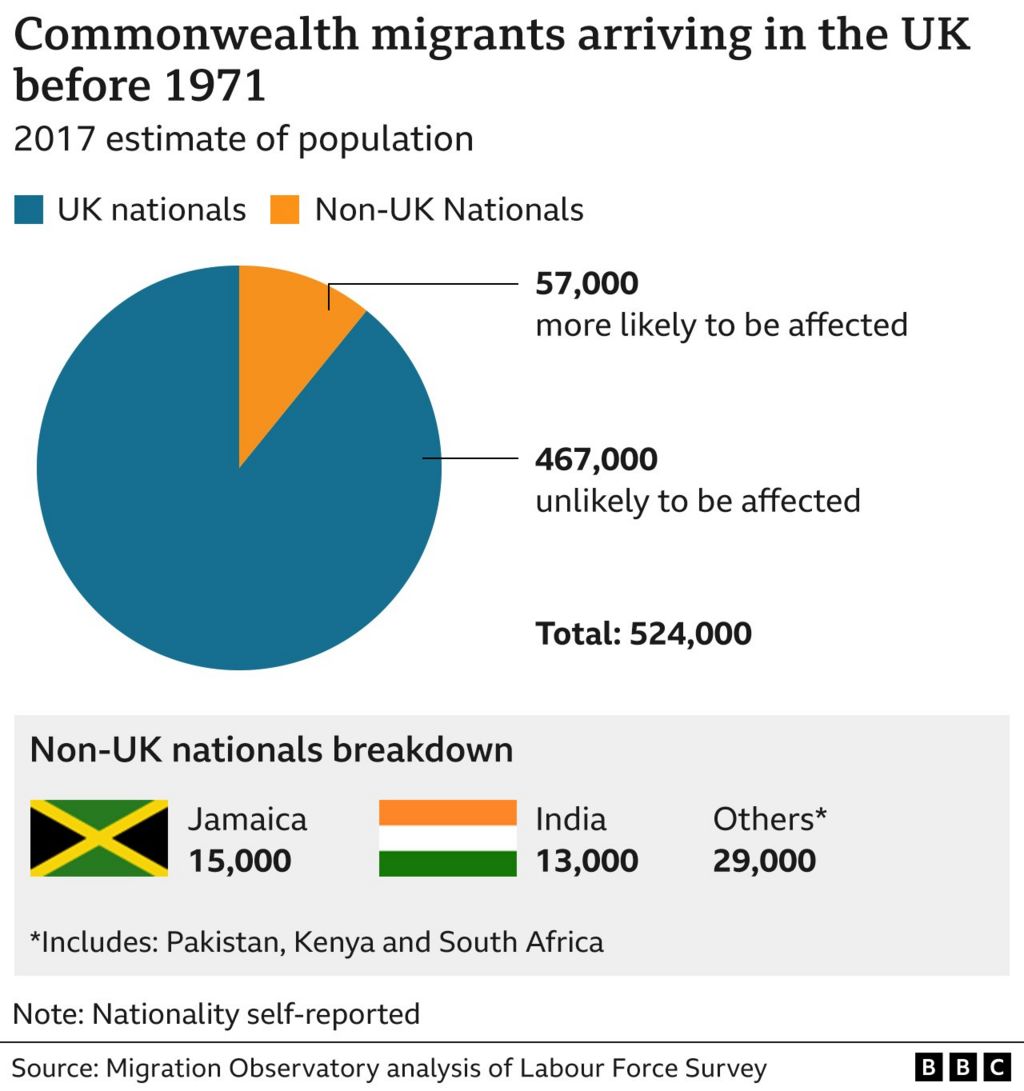This website uses cookies so that we can provide you with the best user experience possible. Cookie information is stored in your browser and performs functions such as recognising you when you return to our website and helping our team to understand which sections of the website you find most interesting and useful.
This video can not be played
To play this video you need to enable JavaScript in your browser.
A look back at life when the Windrush generation arrived in the UK
It is 75 years since the HMT Empire Windrush docked in Tilbury, Essex, on 22 June 1948, carrying passengers from the Caribbean to fill labour shortages in the UK.
In 2018 it emerged that the government had not properly recorded the details of people who had been granted permission to stay in the UK, and many were wrongly deported.
Who are the Windrush generation?
HMT Empire Windrush became a symbol of a wider mass-migration movement.
Its 492 passengers, and others who arrived to the UK from Caribbean countries between 1948 and 1971, became known as the Windrush generation.
Many had served in the British armed forces in World War Two.
Why did the Windrush generation come to Britain?
People from across the then British Empire were encouraged to move to the UK to help with post-War labour shortages and rebuild its battered economy.
Many of those who came became manual workers, drivers, cleaners, and nurses in the newly-established NHS.
Some broke new ground in representing black Britons in society.
Jamaican-British Sam Beaver King served in the RAF during the War, and took a job as a postman after arriving at Tilbury in his 20s.
He became a campaigner for black-British rights, and the first black mayor of Southwark. He also established a programme for migrants to buy homes in the UK, and co-founded the country's first Caribbean-style carnival - a precursor to the Notting Hill Carnival.
This video can not be played
To play this video you need to enable JavaScript in your browser.
What was life like for first-generation Windrush migrants?
Where are the Windrush generation now?
It is unclear how many people from the Windrush generation are still in the UK, but the number is thought to be in the thousands.
They are among more than 500,000 UK residents who were born in a Commonwealth country and arrived before 1971, according to University of Oxford estimates.


What is Windrush Day?
Commemoration events have been held every year on 22 June since 2018.
The HMT Empire Windrush's arrival has also been celebrated many times in popular culture, such as in the 2012 London Olympic opening ceremony.

The Windrush was recreated during the opening ceremony of the London 2012 Olympic Games
What was the Windrush scandal?
The 1971 Immigration Act gave Commonwealth citizens living in the UK indefinite leave to remain - the permanent right to live and work in the UK.
This included the Windrush generation but also people from other former British colonies in South Asia and Africa.
This video can not be played
To play this video you need to enable JavaScript in your browser.
"My whole life sunk down to my feet" - Windrush migrant Michael Braithwaite
However, in April 2018, it emerged that the UK Home Office had kept no records of those granted permission to stay, and had not issued the paperwork they needed to confirm their status.
It had also destroyed landing cards belonging to Windrush migrants, in 2010.
Those affected were unable to prove they were in the country legally and were prevented from accessing healthcare, work and housing.
A review of historical cases also found that at least 83 people who had arrived before 1973 had been wrongly deported.
What did the government do about the Windrush scandal?
This video can not be played
To play this video you need to enable JavaScript in your browser.
Theresa May's Windrush apology to Caribbean leaders
The inquiry, which released its report in March 2020, said that the scandal was both "foreseeable and avoidable", and criticised "a culture of disbelief and carelessness" in the Home Office.
The inquiry made 30 recommendations, including:
- setting up a full Home Office review of the UK's "hostile environment" immigration policy
- appointing a migrants' commissioner
- establishing a race advisory board
Then-Home Secretary Priti Patel accepted the recommendations in full.
- to appoint a migrants' commissioner responsible for "speaking up for migrants and those affected by the system directly or indirectly"
- to give the independent chief inspector of borders and immigration new powers
- to hold events with people affected to "listen and reflect on their stories"
Wendy Williams criticised the decision, saying the proposals would have raised the "confidence of the Windrush community".

Home Secretary Suella Braverman has scrapped three recommendations from Wendy Williams's review
How does the Windrush Compensation Scheme work?
But the scheme has been consistently criticised for processing delays, low offers, and unfair rejections reversed on appeal.
In response, the Home Office said it was "committed to righting the wrongs of Windrush", and that the scheme had paid or offered more than £68m in compensation to the people affected.
The government insisted it would ensure "similar injustices can never be repeated and [was] creating a Home Office worthy of every community it serves".



 Africana55 Radio
Africana55 Radio 
